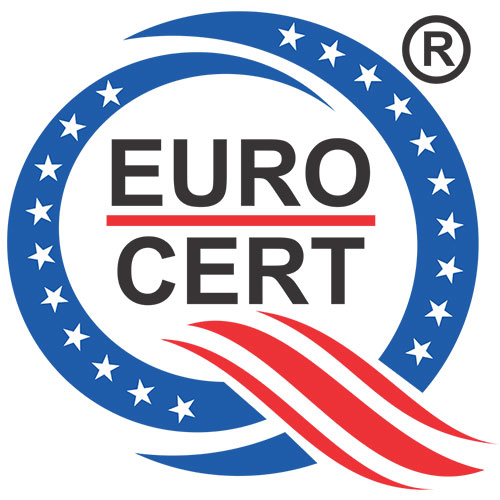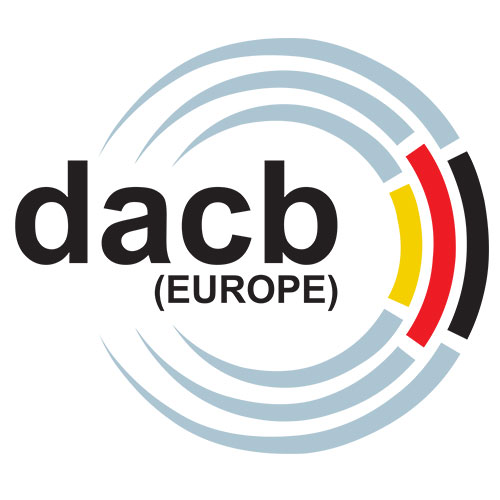ISO 50001:2018- Energy Management Systems
BASIC INTRODUCTION OF ISO 50001:2018
The ISO 50001 energy management standard specifies requirements for an organisation to establish, implement, maintain and improve an Energy Management System (EnMS), enabling the organisation to take a systematic approach to achieving continual improvement of energy performance.
ISO 50001 is an ideal tool for helping your organisation to establish the systems and processes necessary for achieving improved energy efficiency, financial savings & reductions.
The 2018 version of ISO 50001 was released on 21 August 2018.
HISTORY OF ISO 50001:2018
The European Committee for Standardization (CEN) developed EN 16001:2009 Energy management systems. Requirements with guidance for use as a first international energy management standard. This was published in July 2009 and withdrawn in April 2012 as it had been superseded by ISO 50001
ISO published a revised version of ISO 50001 in 2018. The revision focuses on a desire to better promote the adoption of the standard for small and medium sized organizations. Furthermore, it also incorporates ISO high level structure- this allows organizations to integrate a number of management standards together such as ISO 9001 and ISO 14001. Overall ISO 50001 is modeled after ISO 9001 Quality Management System and the ISO 14001 Environmental Management System (EMS).
ELEMENTS OF ISO 50001:2018
The key elements can be described as follows:
- Management Review
- Internal Audit
- Control of Records
- Nonconformity, Corrective Action and Preventive Action
- Incident Investigation
- Evaluation of Compliance
- Monitoring and Measurement
- Operational Control
OBJECTIVE SAMPLE OF ISO 50001:2018
The objectives should be designed to be S.M.A.R.T (specific, measurable, achievable, realistic and time-based):
Examples of Energy management systems Objectives:
Target line: Yearly
- Identify and monitor the costs of energy consumption.
- Involve collating and analysing the utility bills (electricity, gas, water) and any other bills relating to energy consumption.
- The charging system and tariffs should be checked to determine if an improved rate
- Reduction of wastes and improvement of recycling rate
- Promotion of energy and resource conservation
- Proper control of chemical substances
- Development of environmentally benign products
WHAT IS THE PROCEDURE OF ISO 50001:2018 CERTIFICATION
The Certification process shall consist of the following key stages:-
- Application Review & Contract Review
- Initial Certification Audit: Stage-1 & Stage 2 Audit
- Certification Decision
- Continual Assessment (Surveillance Audit)
- Renewal Audit
- Suspending, Withdrawing, Extending or Reducing Scope of Certification
Client Side Documents Requirement
With the right preparation and a good understanding of what is required for ISO 50001:2018 Certification, Some documentation needed ready for Certification Process. The documentation will define:
- EnMS Manual
- Organisation Structure
- Who should record information and what information is recorded
- Responsibilities of Employees
- Internal Audit & Management Review Meeting
- EnMS Policy & Objective
- Energy Performance Indicator
- Planning for Collection of Energy Data
- Emergency Preparedness & Response
- Documented Work Instruction - SOP
- Documented Procedures
BENEFITS OF ISO 50001:2018
- Significantly reduce energy costs through measurement and management of energy consumption
- Reinforce good energy management behaviors throughout the business
- Promote energy efficiency throughout the supply chain
- Evaluate and prioritize new energy-efficient technologies
- Increase your range of new business opportunities and meet contractual obligations
- Increase stakeholder confidence and enhance reputation
- Significant Savings
- Improve overall performance to cut energy consumption and bills
- Reduced carbon emissions and meet government reduction targets
- Mitigate effects of future legislation
- Open opportunities for energy innovation
- Measure and monitor energy use to identify where to improve efficiency
ROAD MAP FOR ISO 50001:2018
Roadmap and plan for ISO 50001 Covering key Points:
UNDERSTANDING
Training on Standard Requirement Organizations needs to have the knowledge, skills and capability to support a standard beyond the certification audit.
PREPARE
GAP Analysis & Environmental Aspect Analysis: We do gap analysis to identify what you do and what ISO 50001 recommends to do, it may be process addition or modification to adopt International Best Practices
IMPLEMENT
System Document Development: Based on the training the client reviews their own management system and evaluates their existing policies and procedures and modifies them to comply with the best practice.
Internal Auditor: Training Regular internal audits against the system are the requirements of the standard.
REVIEW
Standard Implementation : Client must ensure that their employees are adopting the new protocols and procedures inline of the standards.
Internal Audit: Client conducts an internal audit of their management system implementation. They must examine their own processes and procedures in terms of effectiveness.
Management Review: Client to discuss the future of their management system with their senior management about the strengths and weakness of the system to identify areas for continual improvement
ASSESS
Pre-assessment: A pre-assessment audit done prior to and outside the formal scope of certification to identify area that need more work whilst also preparing key employees for the eventual audits. A useful audit to rehearse ,align and de-bug your system:
Stage 1- Assessment: Document Review
Stage 2- Assessment: Run through of the implemented systems.
PROMOTE
Certification Issue A certificate is provided to your organization.
CONTINUING ASSESSMENT
Continuing assessment Visit
A routine surveillance visit which every year or 12 months cycle over a three year period to monitor and evaluate continuing systems performance.
Re-assessment
Re certification of your management system is required every three years after the initial certification and covers a comprehensive review of the whole system. It may include an additional stage 1 review where significant problems have been encountered during the course of the certification cycle.
APPLY FOR ISO 50001:2018 CERTIFICATION
Contact Us: If you plan to go for ISO Certification, you may ask for Quotation by providing your organization’s information in application form, you can download the inquiry form available at the website or submit your inquiry through feedback. Alternatively you may send your inquiry through mail to info@eurocertindia.com or call us at Mob: +91-9769903178
WHAT IS THE COST OF THE ISO 50001:2018
Charges for ISO 50001:2018 Certification may depend on the size, location, Complexity of operation, Processes and it’s inter relevance. Eurocert produces a guidance price list based on company nature & size. For a Quotation please get in touch with us either by sending your inquiry through mail to info@eurocertindia.com or call us at Mob: +91-9769903178
INTEGRATION OF ISO 50001:2018 WITH OTHER STANDARD
An integrated management system (IMS) combines all related components of a business into one system for easier management and operations. Quality, Environmental, and Safety management systems are often combined and managed as an IMS.
Integrated Management System (IMS) integrates all of an organization’s systems and processes in to one complete framework, enabling an organization to work as a single unit with unified objectives.
- INTEGRATED MANAGEMENT SYSTEM (IMS) with ISO 50001:2018 + ISO 9001 :2015
- INTEGRATED MANAGEMENT SYSTEM (IMS) with ISO 50001:2018 + ISO 14001:2015
- INTEGRATED MANAGEMENT SYSTEM (IMS) with ISO 50001:2018 + ISO 45001 :2018
- INTEGRATED MANAGEMENT SYSTEM (IMS) with ISO 50001:2018 + ISO 22000:2018
- INTEGRATED MANAGEMENT SYSTEM (IMS) with ISO 50001:2018 + ISO 27001:2013
- INTEGRATED MANAGEMENT SYSTEM (IMS) with ISO 50001:2018 + ISO 13485:2016
BENEFITS OF INTEGRATED MANAGEMENT SYSTEM (IMS)
- All integrated Standards have a document control requirement
- Meeting all standards’ requirements with one set of policies and procedures
- Increased efficiency and effectiveness.
- Reductions in costs associated with audits.
- Displays commitment to continuous improvement for the organisation as a whole.
- Presents a clear uniform image of the whole organisation.
- Reduces duplication, bureaucracy and maximises Resources.
- Increases time available to management to implement proactive measures.
- Improves internal and external communications.
- The control of records is specified in all three
- Training, competence and awareness is seen in all three
- All three have a requirement for internal auditing
- Management review is seen as critical for all three
- Standards Monitoring and measuring devices are referred to in each
- Continual improvement is key to all three
- Corrective and Preventative Action are major requirements
LIST OF ISO 50001 SERIES STANDARD
ISO 50001:2018 Energy Management Systems
Requirements with Guidance for Use
ISO 50002:2014 Energy Audits
Requirements with Guidance for Use
ISO 50003:2014 Energy Management Systems
Requirements for Bodies Providing Audit & Certification of Energy Management Systems
ISO 50004:2014 Energy Management Systems
Guidance for the Implementation, Maintenance & Improvement of an Energy Management System
ISO 50006:2014 Energy Management Systems
Measuring Energy Performance using Energy Baselines (ENB) & Energy Performance Indicators (ENPI) – General Principles & Guidance
ISO 50015:2014 Energy Management Systems
Measurement & Verification of Energy Performance of Organizations—General Principles & Guidance
ISO 50047:2016 Energy Savings
Determination of Energy Savings in Organizations
Accreditation


